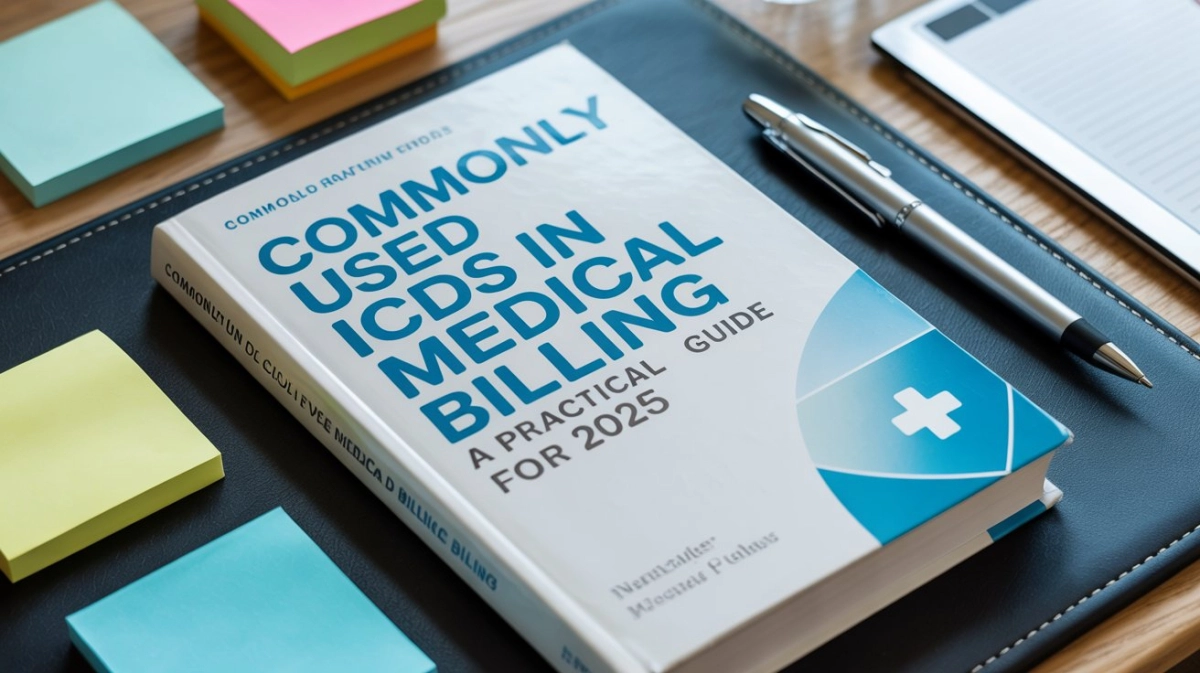Whether you’re a medical biller, coding student, or healthcare provider, understanding commonly used ICDs in medical billing is essential. ICD codes (short for International Classification of Diseases) are the foundation of diagnosis coding and crucial for accurate billing, claim processing, and compliance. But with over 70,000+ ICD-10-CM codes, how do you know which ones are most relevant?
This article breaks it down for you—from the top ICD codes in daily billing to real-world tips on how to use, learn, and stay updated with them.
What Are ICDs in Medical Billing, and Why Are They So Important?
ICD codes are alphanumeric identifiers assigned to diagnoses and medical conditions. These codes help:
- Justify medical necessity for treatments and procedures
- Determine reimbursement from insurance payers
- Track epidemiological data (e.g., trends in diabetes or hypertension)
- Maintain healthcare compliance and legal documentation
Think of ICD codes as the “language” between healthcare providers and insurance payers. If your code doesn’t tell the right story, your claim could be rejected—even if the treatment was necessary.
Top 10 Most Commonly Used ICDs in Medical Billing (2025)
Here are some of the most frequently billed ICD-10-CM codes in various medical settings across the U.S., according to CMS data and claims audits:
| ICD Code | Description | Specialty Usage |
|---|---|---|
| E11.9 | Type 2 diabetes mellitus without complications | Endocrinology, Primary Care |
| I10 | Essential (primary) hypertension | Internal Medicine, Cardiology |
| J06.9 | Acute upper respiratory infection, unspecified | Family Medicine, Pediatrics |
| M54.5 | Low back pain | Orthopedics, Chiropractic |
| R51.9 | Headache, unspecified | Neurology, Urgent Care |
| J45.909 | Unspecified asthma, uncomplicated | Pulmonology, Pediatrics |
| Z00.00 | Encounter for general adult exam without abnormal findings | Preventive Medicine |
| N39.0 | Urinary tract infection, site not specified | Urology, Internal Medicine |
| R07.9 | Chest pain, unspecified | Emergency Medicine |
| F41.1 | Generalized anxiety disorder | Psychiatry, Primary Care |
These codes reflect high-volume chronic conditions, common acute visits, and preventive care encounters—all of which are frequent in both outpatient and inpatient settings.
Understanding How to Use ICDs in Medical Billing Effectively
Correct usage of ICDs doesn’t stop at selecting the right code. Here’s what top billers do:
✅ Tips for Accurate ICD Coding:
- Always code to the highest specificity (e.g., use E11.65 for diabetes with hyperglycemia instead of E11.9).
- Link ICDs to the correct CPT/HCPCS codes to ensure medical necessity is established.
- Use Z-codes (like Z79.899 for long-term drug therapy) when applicable to support continuity of care.
- Review payer-specific LCD/NCD policies for ICD/CPT combinations.
- Cross-check documentation—the diagnosis must be supported in the progress notes.
How to Learn Commonly Used ICDs in Medical Billing (Without Getting Overwhelmed)
If you’re new or just brushing up, here’s how to get confident with ICDs:
- Start with top 50 ICDs in your specialty – repetition leads to mastery.
- Use cheat sheets or codebooks with tabs for most-used chapters.
- Practice using CMS’s ICD-10 Lookup Tool or AAPC’s code search.
- Watch real claim examples or audit reports to understand patterns.
- Enroll in specialized ICD-10 training or coding bootcamps focused on real-world billing.
Benefits of Knowing Commonly Used ICDs in Medical Billing
Being familiar with top ICD codes offers several advantages:
- Increased billing efficiency (less time searching, fewer denials)
- Faster claim approvals due to proper coding
- Better communication with providers
- Improved compliance and audit readiness
- Higher revenue cycle performance
It’s not just about memorizing codes—it’s about understanding how they drive the business of healthcare.
Common Challenges with ICDs in Medical Billing
Even experienced billers face hurdles like:
- Unspecific documentation (e.g., “diabetes” without noting type or complication)
- Frequent ICD updates each October
- Payer denials due to lack of LCD coverage
- Misuse of symptom codes without a definitive diagnosis
➡️ Pro Tip: Always crosswalk your ICDs with procedure codes and check if there’s any NCCI edit conflict.
ICDs vs CPTs: What’s the Difference?
Many new billers confuse ICDs with CPT codes, but here’s the core distinction:
| ICDs | CPTs |
|---|---|
| Diagnose the patient’s condition | Describe what was done to the patient |
| ICD-10-CM (Diagnosis codes) | CPT/HCPCS (Procedure codes) |
| Used for why the care was provided | Used for what care was provided |
| e.g., E11.9 (Type 2 diabetes) | e.g., 99213 (Office visit) |
They work together—an ICD code alone won’t get a claim paid.
Best Resources to Stay Updated on Common ICDs
Here are trusted tools and platforms to keep your code knowledge sharp:
- CMS.gov ICD-10 Database
- AAPC ICD-10 Code Lookup
- ICD10Data.com
- AHIMA Code Clinics
- Medicare’s NCD & LCD search tools
- Official Coding Guidelines (Updated yearly)
Actionable Takeaways
✔ Memorize top ICDs by specialty
✔ Use specificity and documentation to drive accuracy
✔ Regularly review payer policies and updates
✔ Train with real-world examples
✔ Understand the ICD/CPT relationship for successful claims

